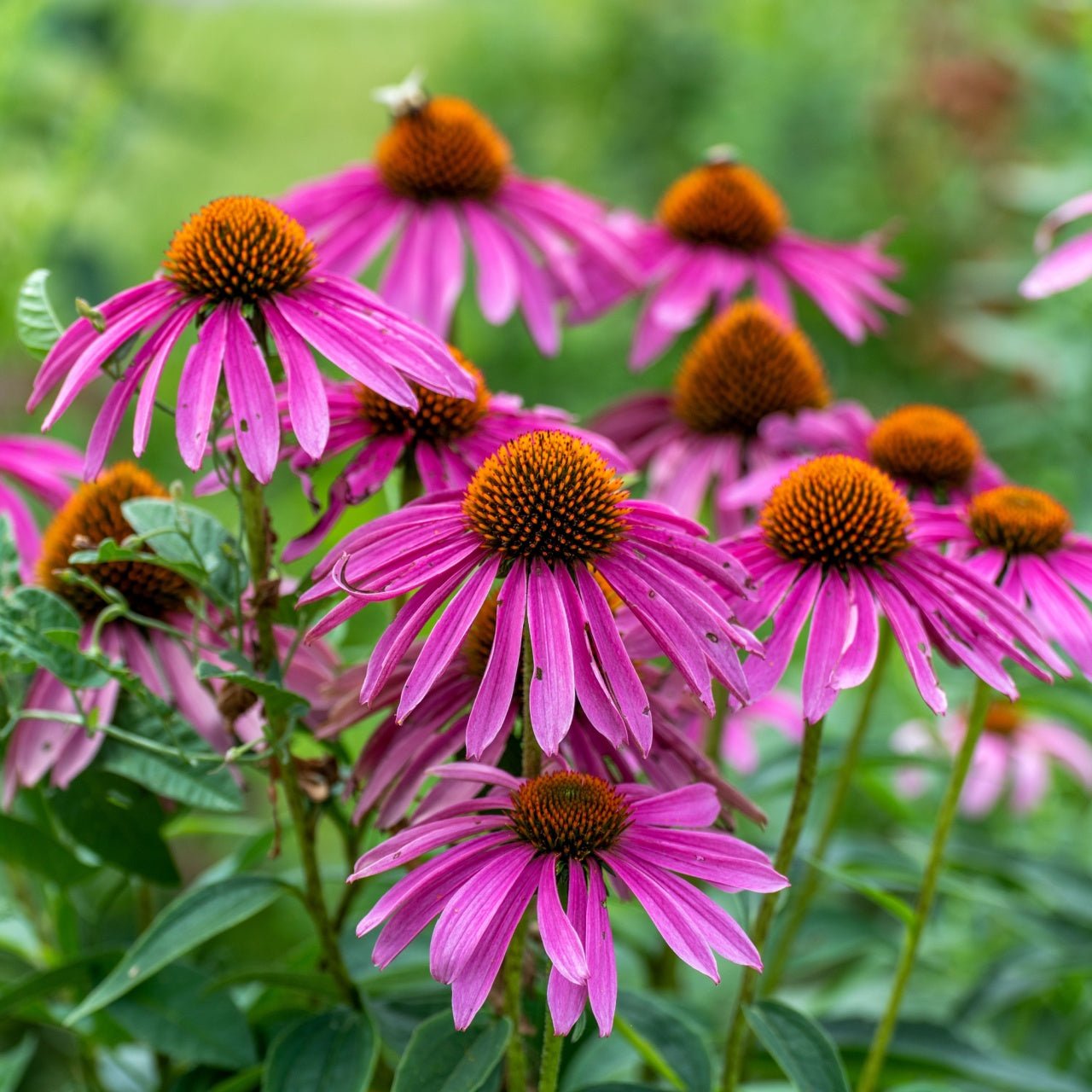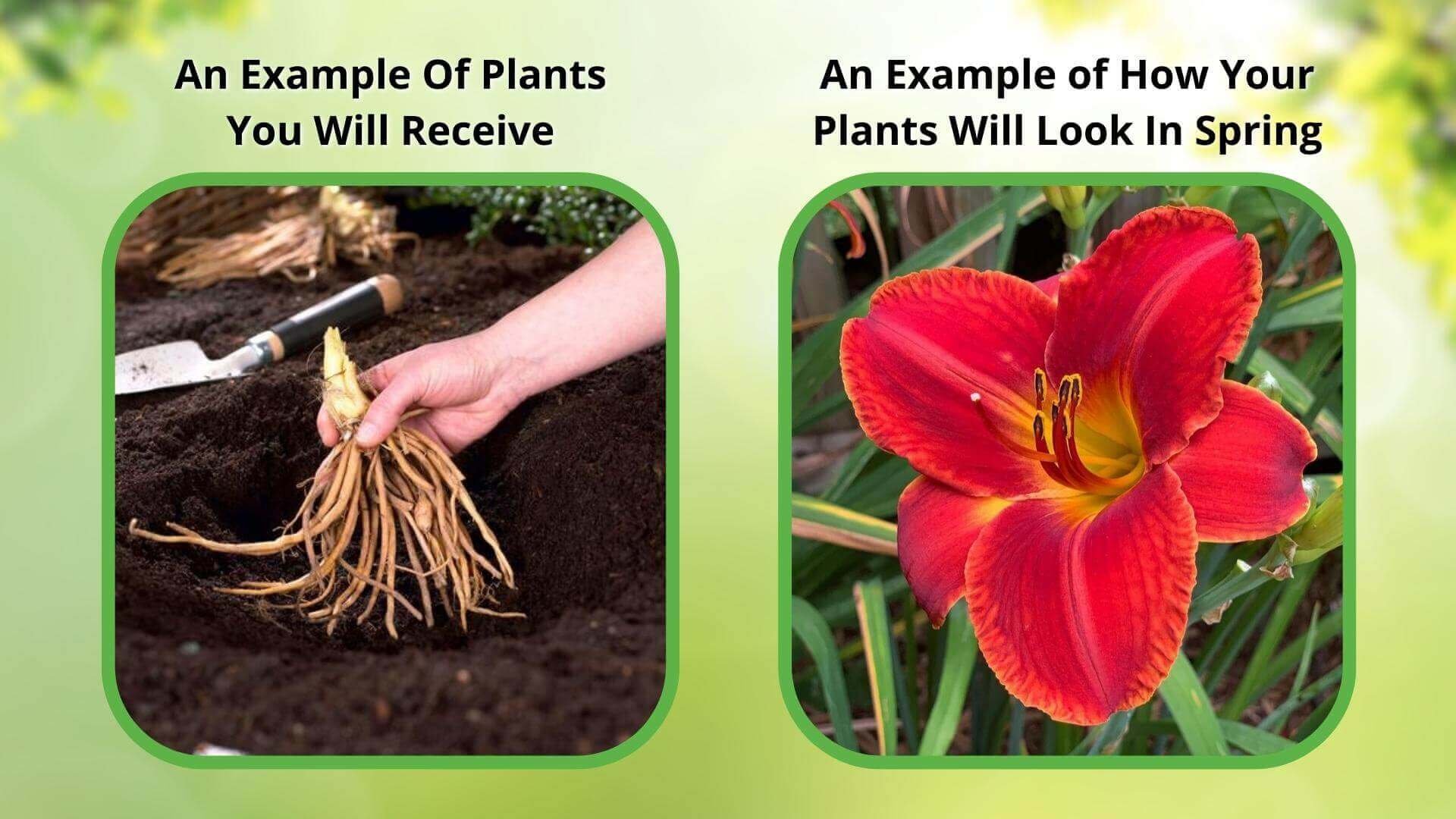



Echinacea Plant
Attracts pollinators like bees
Low-maintenance and hardy plant
Long blooming season
Thrives in
ZONE 3ZONE 4ZONE 5ZONE 6ZONE 7ZONE 8ZONE 9This plant ships:
November 20251 Year Guarantee on all plants
Echinacea Plant For Sale
The Echinacea Plant (Echinacea purpurea) is native to central and southeastern North America and are commonly found growing along woodland edges, among prairies and along road sides. Going by the common name ‘Purple Coneflower’, it is a well-known medicinal plant that has been used extensively to treat a myriad of ailments.
This quaint, yet vibrant flower blooms from early to late summer, and like a sunflower, follows the sun as it shifts across the sky. Coppery in color, the center of the inflorescence is made of hundreds of tiny, individual flowers called disk florets. These florets have the appearance of being spikey due to the rigidness of the bracts that extend far beyond each floret’s length.
Plant Details - Echinacea Plant
Family: Asteraceae
Hardiness Zones: 3 to 9
Light Requirement: Full sun to partial shade
Water Needs: Moderate
Height: 2 to 4 ft
Spread: 1.5 to 2 ft
Growth Rate: Moderate
Bloom Time: Early summer through mid-autumn
Flower Color: Pinkish-purple petals with a prominent orange-brown central cone
Wildlife Value: Attractive to pollinators and seeds are a food source for finches
This perennial is adored by pollinators and will ensure a flurry of activity in the garden. Golden finches are particular fans of this flower as they come to feast upon its seeds.
The Echinecea Plant makes excellent cut flowers as the flowers persist on long sturdy stems and remain fresh for extended periods. The petals of the flowers are edible and have a slightly sweet taste to them. Plant these delightful perennials next to your kitchen door and in your patio garden to regularly enjoy the sight and taste of these charming flowers.
Landscape Uses and Maintenance - Echinacea Plant
This perennial requires well-drained soil and does not tolerate wet feet. It does best when planted in moderate to dry soils. Due to its long taproot, it is a drought tolerant species. It thrives in full to partial sun conditions, and requires at least four hours of sun per day to be productive. Easy to grown, this perennial is deer resistant and free of serious pest or disease issues. The finished flowers can be deadheaded to encourage future blooms. If growing this plant from seed, remember that seeds require stratification (a cold, moist period) to germinate.
Noteworthy Characteristics
Attracts pollinators, ideal as cut flowers, drought tolerant.
The subtle beauty of this productive perennial will have you and the Golden Finches looking forward to its tasty petals and seeds year on year. Shop for the Echinacea Plant online at TN Nursery. For 68 years, we have served the landscaping industry and homeowners with specimen plants.
This Is How Your Plants Will Look upon Delivery

Bloom Season
Summer
Bloom/Foliage Color
Purple
Height at Maturity
Over 12"
Care
Echinacea plants thrive in well-draining soil with regular watering. They are generally drought-tolerant once established. Remove spent flowers to encourage continuous blooming. Prune back dead stems in late fall or early spring. Fertilize lightly in early spring for best growth.
Plant Reproduction
Echinacea Plant spreads naturally through self-seeding
Shipping date depends on the date displayed and chosen when you order from the product's page.
We only accept returns on plants verified dead. If you think your plants have died, we offer a 1 year warranty, please use this File a Claim Link to verify dead plants and start with return warranty process.





.png?v=1722114816947&em-origin=cdn.accentuate.io&em-format=auto)
Medicinal Benefits:
Echinacea is well-known for its medicinal properties, often used to boost the immune system and support overall health. Growing Echinacea not only beautifies your garden but also provides potential health benefits.
Pollinator Magnet:
The flowers attract a variety of pollinators, including bees and butterflies, which helps support a healthy garden ecosystem. Their presence can enhance biodiversity and aid in the growth of other plants.
Vibrant Blooms:
Echinacea features striking daisy-like flowers in bright shades like dark purple. These vibrant blooms provide a splash of color and stand out beautifully in any garden setting.
Easy-Care Garden Favorite:
Echinacea plants are resilient and drought-resistant, needing little upkeep once settled. They adapt well to different soil types and conditions, making them ideal for gardeners looking for a low-maintenance option.
Caring Tips
How do I care for my Echinacea Plant?
Each box contains detailed care instructions and information about your product. But here's the basics.
Care Tips
Echinacea plants thrive in well-draining soil with regular watering. They are generally drought-tolerant once established. Remove spent flowers to encourage continuous blooming. Prune back dead stems in late fall or early spring. Fertilize lightly in early spring for best growth.
Light Requirements
Echinacea, commonly known as coneflower, flourishes in full sun, needing 6 hours of direct daylight daily. It can tolerate partial shade but will bloom less abundantly. Full sun ensures the healthiest growth and vibrant flowering.
Hardy Planting Zones
3 • 4 • 5 • 6 • 7 • 8 • 9
Header
Use this content to share information about your store and products.
Frequently Asked Questions
How often should I water my plants?
How do I know if my plant is getting too much or too little sunlight?
What should I do to prepare my plants for winter?
What are the signs that my plant needs fertilizing?
How can I prevent pests from damaging my plants?
How do I choose the right plant for my climate zone?






